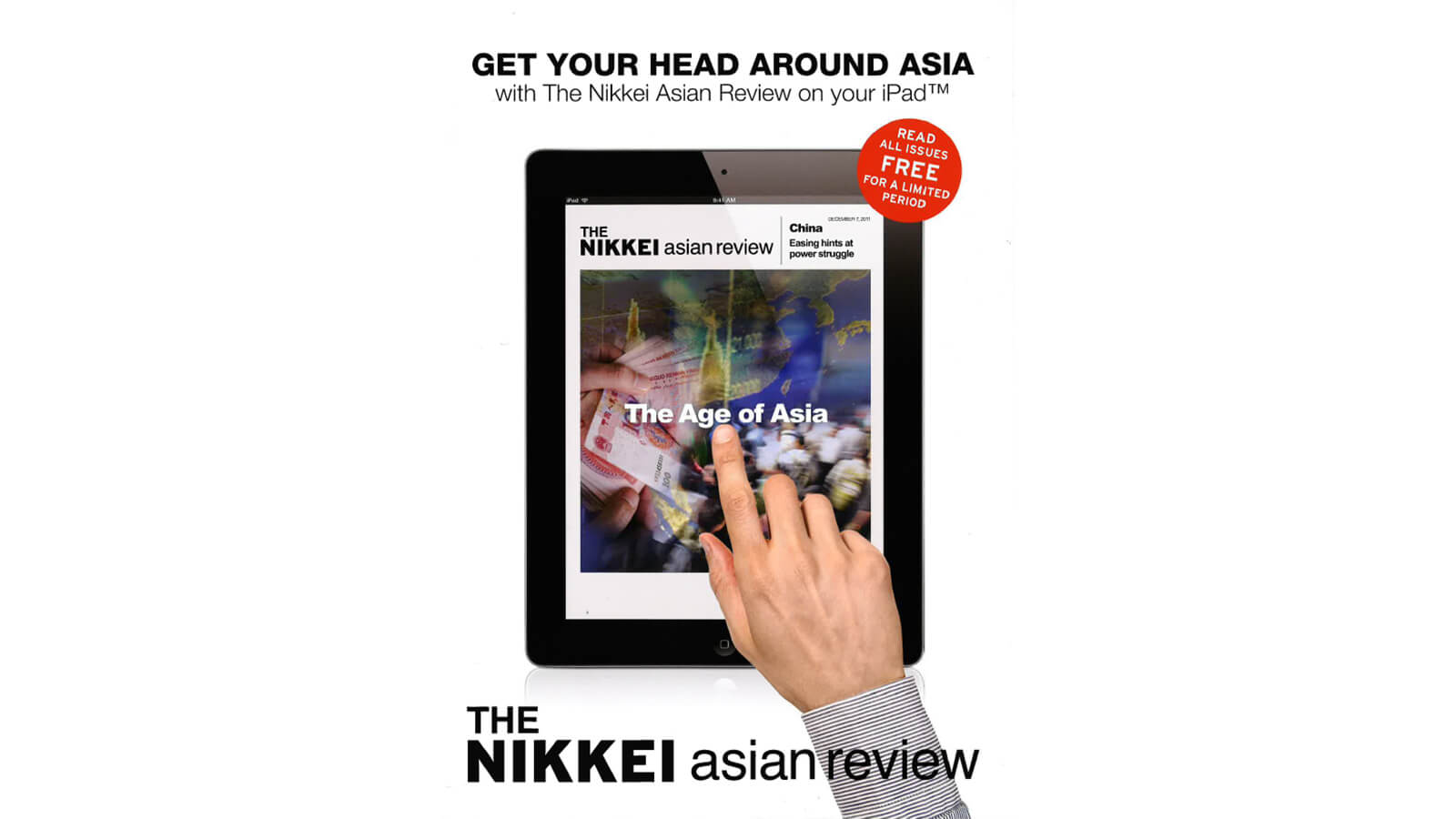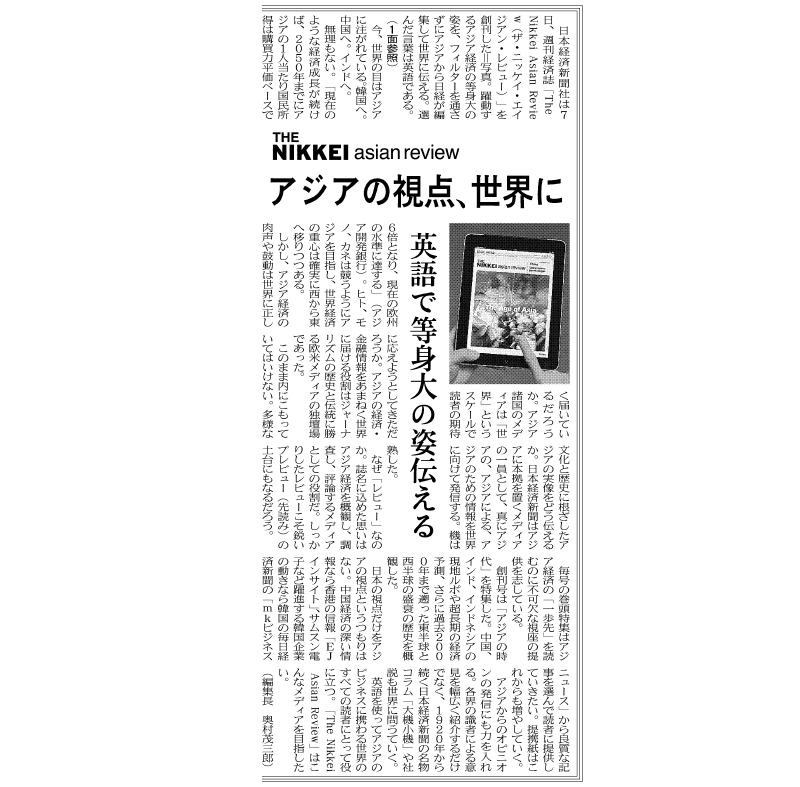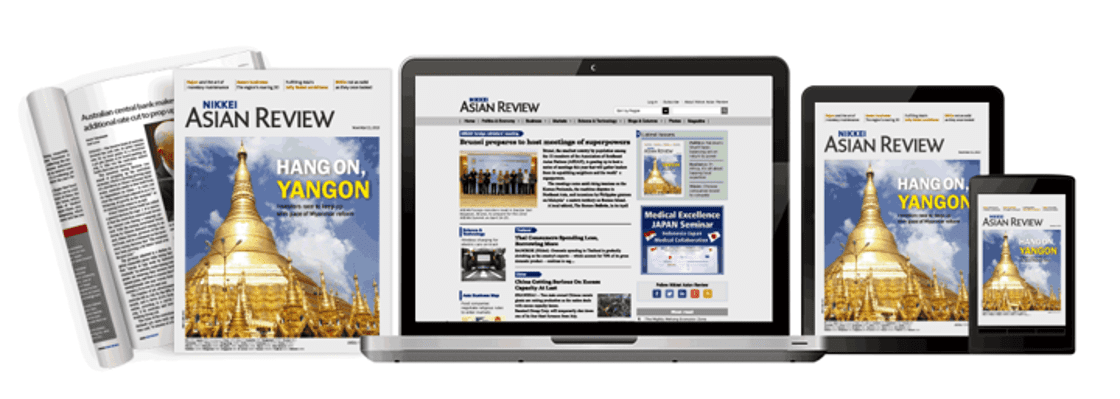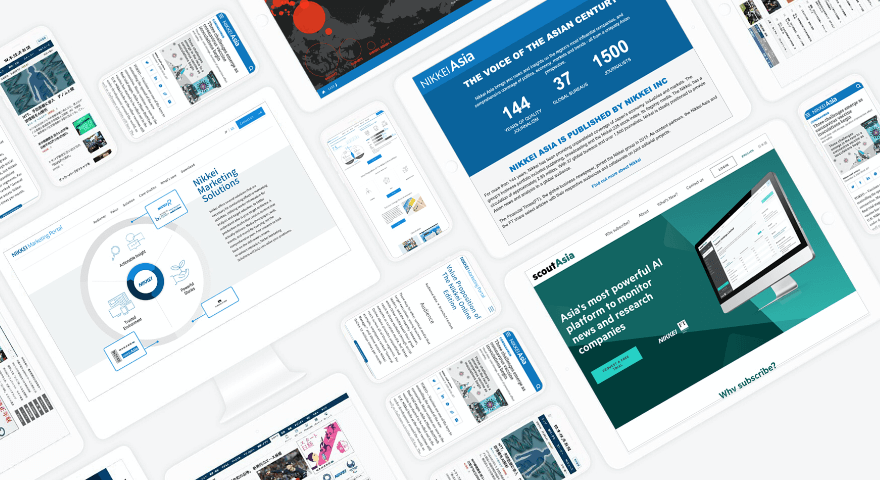- History
10 years on, Nikkei Asia serves as flagship in global push (Part1)

Photo from the first issue of The Nikkei Asian Review in 2011 (Dec. 7, 2011)
Launched in December 2011 as The Nikkei Asian Review, Nikkei Asia is the flagship English-language media platform in Nikkei's global strategy.
In a major shift away from the approach taken by the Nikkei Shimbun, the Nikkei digital edition and other Nikkei media platforms, which focus on the shrinking Japanese market, Nikkei Asia targets readers in the growing global market. It employs a digital-first strategy to provide high-quality Nikkei content from an Asian perspective and which captures the pulse of the region's economies. The result is a media voice that is symbolic of Nikkei's editorial collaboration with the Financial Times (FT).
The decision to launch a new brand a decade ago has proved a success, and Nikkei Asia continues to make great strides as one of Asia's highest-quality media outlets.
From the iPad to the world
The idea for creating a new platform at Nikkei was first made clear in late July 2011. At the time, Japan was still reeling from the Fukushima nuclear accident and twin earthquake and tsunami disaster in northern Japan, and there were concerns about the company's future.
Tsuneo Kita, Nikkei's president at the time, expressed his alarm at a companywide meeting of managers: "Selling Nikkei's Japanese-language content overseas is difficult," he said. "If we don't act now, the company will be doomed to permanently shrink in a contracting domestic market. We can't survive like this."
He laid out an aggressive strategy: "Nikkei will produce content on Asia from an Asian perspective and publish it for the world in English."
The global economy's center of gravity has been shifting from West to East in the 21st century, driven by the rapid growth of China and India. The magazines Asiaweek and the Far Eastern Economic Review, both of which covered Asia, had ceased publication in December 2001 and December 2009, respectively, creating a vacuum of quality media players to rival Nikkei.
Naotoshi Okada, who headed the editorial bureau at the time, spearheaded the launch of the new outlet. To fire up the launch-preparation team, he told the members: "Can we leave it to the West to deliver Asian news to the world? In many Asian countries, the media is still dominated by state-run players, and journalism has not developed in the true sense. From its base in Japan, Nikkei can serve as a quality media outlet that provides the world a dispassionate, bird's eye-view of Asia." The team envisioned a media voice in the mold of U.K. magazine The Economist, which commented on the European economy from a distance.
At the core of the team was a small group of seven people -- four editors, including the editor-in-chief, in the editorial bureau and three product managers in the digital organization bureau. A designer who had won awards in international poster competitions was recruited from outside the company to serve as art director on the editorial side, and two young Nikkei employees in their third year with the company were selected from an internal contest to join the digital organization bureau. When there were not enough hands, the three product managers would sometimes work together until dawn to help add photos to stories. The atmosphere was that of a venture company or startup just getting off the ground, and the idea of "creating a new media entity of our own" is still in Nikkei Asia's DNA 10 years later.
At the time of the launch, speed was the most important issue. We chose a completely new form of digital media, an app for the iPad, which was launched in Japan in May 2010. The App Store enabled us to quickly develop sales channels across the globe.
In November 2011, we sent our application to Apple for approval and were able to launch our first issue on Dec. 7, 2011, under the name The Nikkei Asian Review. We believed that "a solid review is the foundation for a sharp preview," and were determined see Nikkei take on the role of a quality media player that provided a broad view of Asia -- a role once filled by the Far Eastern Economic Review.
The mission at the time was: "To be of use to all readers around the world who do business with Asia in English."

The Dec. 7, 2011, edition of the Nikkei, which carried an article that marked the launch of the new outlet.
The first issue was titled "The Age of Asia." The Nikkei ran a story about the launch under the headline "Asian perspectives to the world: conveying a life-size image in English." When first published, the app was the top free download on the App Store and was used in an Apple advertisement for the iPad.
From its inception, The Nikkei Asian Review, which started out as an app tailored to the digital world and the then-cutting-edge iPad, served as the vanguard of Nikkei's "Global & Digital" business strategy.
Triple merger
When The Nikkei Asian Review was launched, Nikkei had two other English-language media platforms: a print edition, The Nikkei Weekly, which had previously been The Japan Economic Journal, launched in 1963, and Nikkei.com, an electronic publication that had begun in 1996 on Nikkei Net, Nikkei's website.
The Nikkei Asian Review was off to a good start, so we decided to merge all three into one brand, Nikkei Asian Review, without the "The," in November 2013, two years after publishing the first issue. We also established a paywall and began charging for access.

In 2013, three media platforms were merged into Nikkei Asian Review.
In conjunction with that change, we updated our coverage of Asia. In May 2013, the Asian Business Reporting Center was established in the editorial bureau. In December of that year, we also opened a Yangon bureau in Myanmar. The first issue after the revamp carried a feature on the Myanmar economy and was published prior to approval of the new bureau. In March 2014, the Bangkok bureau in Thailand was upgraded to the Asia Editorial Bureau, and the number of reporters, including journalists hired locally, was significantly increased. Meanwhile, Nikkei Group Asia Pte Ltd., the core base for Nikkei Group's Asian operations, was established in Singapore, and the editorial and business divisions were now in place.
The cover feature of the April 24, 2014, issue, "A future in drought," won the top award for environmental coverage in the regional media category at the Society of Publishers in Asia (SOPA) Awards held in Hong Kong in June 2015.
Go To Official Site:https://asia.nikkei.com/
Nikkei Inc.

Our mission is to deliver useful information to businesspeople around the world through our global products. We use our extensive network in Asia to conduct in-depth research on fast-growing markets and companies. By bringing you unique perspectives and the latest economic and political news, we help you succeed in your business in Asia.
See More
